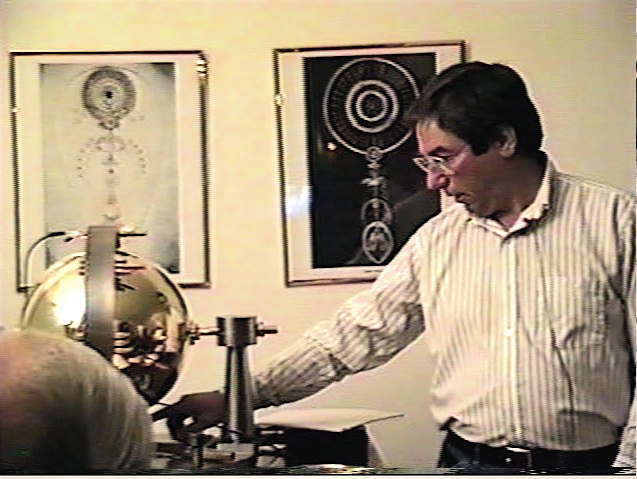 |
| In court? Need assistance? Jurisdictionary |
 |
| Your Own Credit Repair Business |
|
Topic: John Keely's
Laws of Harmony Section: Law of Cohesion Table of Contents to this Topic |
|
"The cohesion between atoms diminishes directly as the square root of the pressure and temperature, and as the square of electric intensity." Commentary October, 1988 Cohesion is often equated with electron valency. The greater the valence - the greater the cohesion. The actual accepted definition of cohesion is: "The tendency of parts of a body of like composition to hold together, as a result of intermolecular attractive forces."(1) Upon further investigation, the definition of molecular attraction is: "A force which pulls molecules towards each other."(1) What we have here, when all is said and done, is a nebulously undefined term called "force" which is alledgedly responsible for causing this pulling together. Again modern science doesn't or is hesitant in giving a clear definition of that which it deals. Keely, on the other hand, doesn't shy away from such a task. He says cohesion is caused by the interaction of pressure, temperature and elecrticity and goes on to say just how they relate to cause varying degrees of cohesion. In other words, cohesion is a function of vibratory energies. Heat is a vibration, the electrical current is a vibration and pressure has a direct effect on frequency and amplitude of vibrations. Cohesion is very important to SVP because it is the dissolution of inter-molecular cohesion which Keely used to create his awesome pressures from the disintegration of water. By breaking the cohesiveness between those particles which go to makeup the water molecule he was able to release their subatomic energies which, as we know from our experiences with nuclear energies, can be enormous. Here is a place where a table defining these values would be helpful. A table of each element in its neutral or natural state and comparative tables of it as it is subjected to pressure and temperature and then the table discussed last month of electrical equivalents. Remember, Keely is speaking of intensity of the electrical current. He considered the electrical current as a stream of atomoles of extremely high frequencies. He also spoke often of his intensifying the current as opposed to amplifying it. In electrical terminology I believe the equivalent would be amperage of the current. I am not sure but that he meant he was increasing the frequency of the current when he intensified it. More thought is needed here. The previously discussed Law of Chemical Dissociation (SVP 1/88) gives a little insight here as dissociation may be considered opposite to cohesion. He disusses the attraction of cohesion as being between atoms and not molecules whereas the quotes given earlier both speak of molecular attraction. What is the difference? There aren't any definitions of atomic attraction in my reference books. I would think that Keely is correct in his assertions. After all a molecule is composed of or is actually the sum total of the atomic interactions making up that molecule. Therefore a modulation of those atomic forces would have an effect on the molecule whereas modulating the molecule itself would be difficult. An analogy would be not unlike the dismantling of a brick wall. We can use a large hammer and strike the wall's surface, in which case, the energy would soon dissipate throughout the wall's surface. However, if we dealt with each individual brick, less energy is needed and less energy is dissipated throughout the structure. Dissolve a few bricks and the whole wall falls apart. In like manner, one could find a way to dissolve just the cement between the bricks and get dissociation of the structure leaving the bricks whole. Striking the wall with a huge wrecking ball would destroy some of the bricks thus releasing smaller particles (radioactivity). I think I like Keely's method and way of thinking much better. |
| See Also: |
 |
